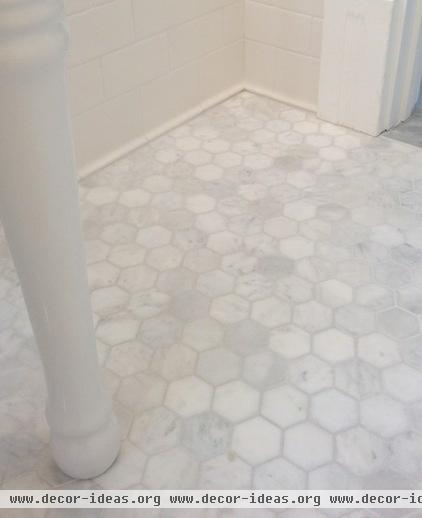5 Ways DIY Remodels Get Derailed — and How to Deal
http://decor-ideas.org 08/23/2013 12:30 Decor Ideas
There is one word to sum up my feelings about our upcoming kitchen remodel: "dread." Because after nearly four years in our old house, I finally understand the nature of a renovation. The way your project will wander off into the woods, dragging you with it through the underbrush.
After four years of DIY projects, construction and chaos, I can accurately predict what we’re in for. However, this time I'm trying something new: I'm actually going to attempt to apply what I've learned. Surely, after three whole floors of gutting, banging, hauling, ripping, fixing, patching and sanding, I’ve learned something, right?
Here are five ways that I've seen how a remodeling project can veer off course, and how to deal with the issues.

1. Endless, Endless, Endless Possibilities
The essence of DIY is a hopeful dream of something beautiful with the possibility of bending the rules of time, space and budget — otherwise known as "but it would be awesome" syndrome or "if I just keep looking I will find the one that exists in my imagination"-itis.
My suggestion: Start planning long before you have to. It seems obvious, but it's easy to be so absorbed in the current project that you don't think ahead.
Working on your design ahead of time gives you the chance to consider your options, think of new ideas and not stress about needing to make an immediate decision. You’re going to run into plenty of unavoidable hurdles, and you'll appreciate being able to focus on those and not on details that could have been decided in advance.

2. Finding a Project Within the Project
When you gut the bath and find an entire other bathroom underneath. When you gut a ceiling and find that a support beam is rotten or missing. When you rip open a wall and discover that the previous owner installed a run of ductwork made out of cardboard.
This type of derailment and the subsequent time, expense and frustration apply to all house projects, not just DIY.
My suggestion: Expect it and factor in time for surprises. When you start, it feels like, "This will be done in no time!" That’s excitement talking; ignore it, because it’s just going to disappoint you.
Instead, set a realistic timeline. Then double it. If you’re working with an old house, go ahead and triple it. Anticipate setbacks and prepare for them time-wise. They're going to happen; you might as well plan for them.

3. Not Fully Understanding the Scope of Your Project
If the roof leaks and you’re stripping paint, you’ve started in the wrong place. And even if the roof doesn't leak, the answer to the question "Should we strip the paint?" should be predicated on not having any other project that will need to be done for the next year.
The project’s time-energy-budget ratio has to be equivalent to the importance of the end result. And while I commend the impulse to restore a house to its original glory, stripping 12,894 miles of spindles, molding, baseboard and window trim is a commitment to a project of such intense detail that few people choose it with full awareness of what they’re getting into.
Those people are true restorationists, and I bow to their devotion. But for the rest of us, it’s the kind of project you start to do yourself because you have no idea what you're getting into.
My suggestion: Be sure you fully understand the undertaking and are certain that the end reward is worth it to you.
It's especially easy in the early haze of house-excitement to forget that your time and energy are not unlimited. And you might not comprehend that there will come a time when the only thing you care about is being finished.

4. Derailing Your Own Project
I'm not speaking from personal experience here or anything, but I've heard of people being in the middle of a project and a better idea occurs to them in the middle of the night. And once that happens, no matter if you’ve already run plumbing or built a wall, the new, clearly superior plan is impossible to resist.
My suggestion: I don't have one. Because I have never done this.
But if I did ever do this, I bet it would make my husband nuts. Especially if I waltzed in, waved my hands and said, "This is all wrong, but fortunately we can fix it."
Especially if it involved recessing a bath cabinet into a wall that was already built and Sheetrocked.
Especially if the cabinet had to be custom made, in our garage, by people who are not cabinetmakers.

5. Burnout
If you are not doing a project yourself, you’re going to have restrictions based on something. Or even lots of things: budget, availability, timeline, contractors.
But if you’re doing it all yourself, you can skirt every single restriction. If you really want that million-dollar kitchen, you could make custom cabinets — out of cardboard — if you needed to.
But it turns out that restrictions are important. Without them, there is no end to what is possible. But also there is no end to the work you make for yourself. And at some point it becomes exhausting to care so much. The exhaustion and responsibility drain your enthusiasm.
My suggestion: Walk away for a few days.
If you share my husband’s personality type, this is next to impossible for you. And I get that. I really do. I’m married to the most project-slaying man ever. And it took me a long time to appreciate that walking away is entirely different for him than it is for me.
But if you cannot walk away from a project that is not actually life-or-death, you’ve blurred the line between construction and the meaning of your existence. And once you’re in that tunnel of project blindness — once you’re frustrated, tired, irritated — you’re no good to yourself, to the project or to your family.
More: 8 Lessons on Renovating a House From Someone Who's Living It
No DIY for you? Find a remodeler or contractor
Related Articles Recommended












